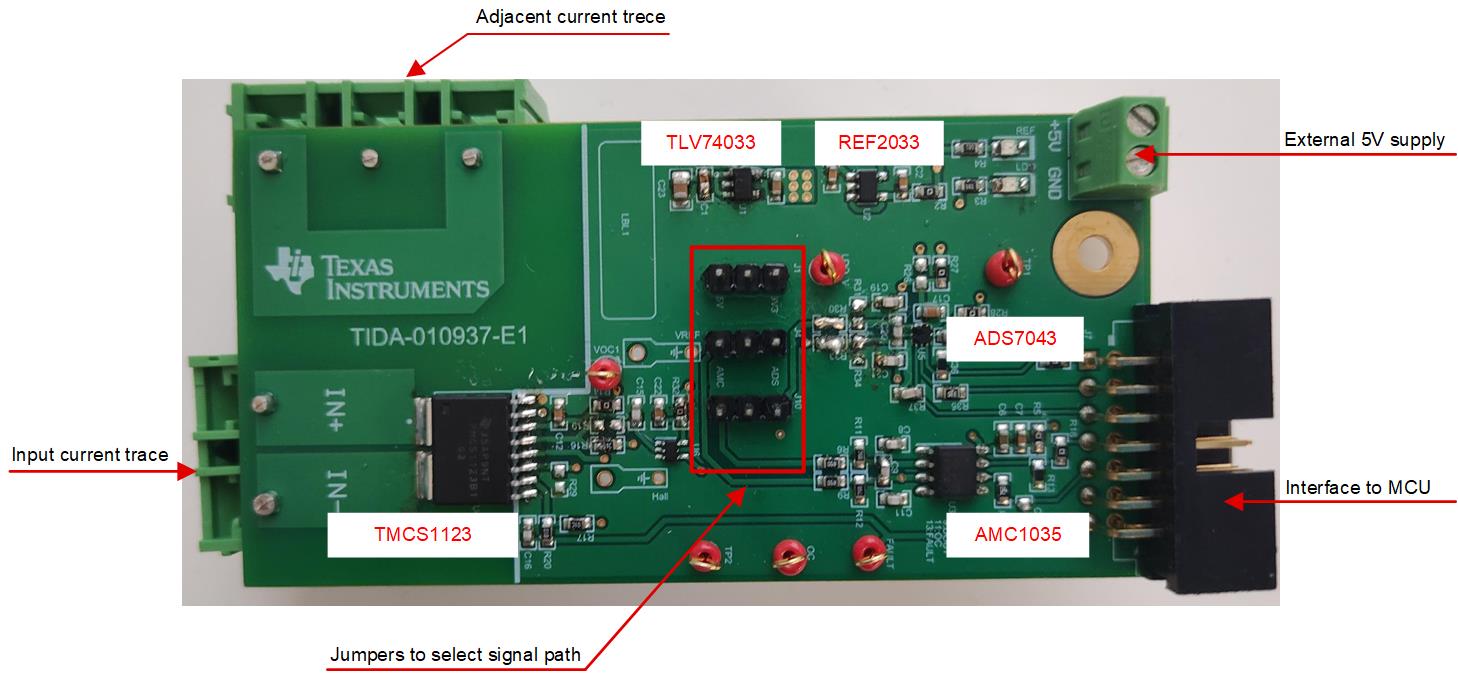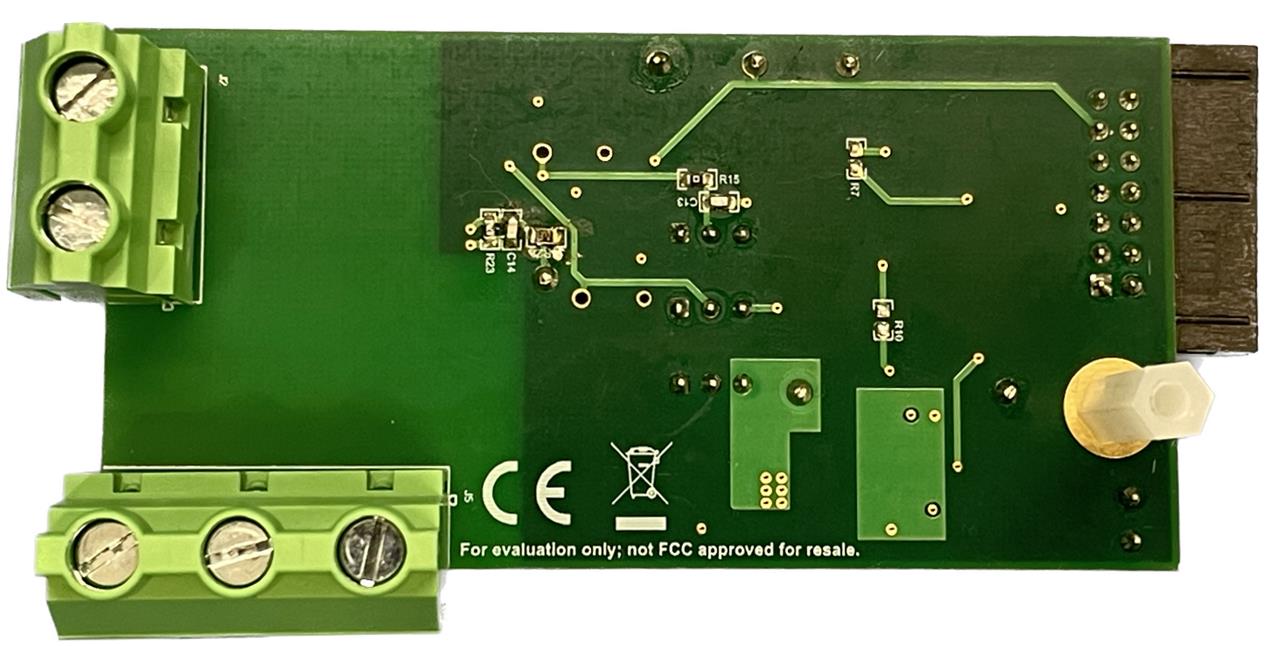TIDUF65 March 2024
- 1
- Description
- Resources
- Features
- Applications
- 6
- 1System Description
- 2System Overview
- 3System Design Theory
- 4Hardware, Software, Testing Requirements, and Test Results
- 5Performance Comparison with Competitor’s Device
- 6Design and Documentation Support
- 7About the Author
4.1 Hardware Requirements
Figure 4-1 and Figure 4-2 outline the printed-circuit-board (PCB) top view and bottom view with the key devices, input current, and I/O connectors to interface to an MCU and the jumpers to configure the design.
 Figure 4-1 TIDA-010937 PCB Top
View
Figure 4-1 TIDA-010937 PCB Top
View Figure 4-2 TIDA-010937 PCB Bottom
View
Figure 4-2 TIDA-010937 PCB Bottom
ViewThe headers and default jumper settings are explained in Table 4-1 and Table 4-2.
Table 4-1 Default Resistor and Jumper
Settings
| HEADER, RESISTOR | JUMPER, RESISTOR SETTING |
|---|---|
| J1 | Connect to 3.3V power supply |
| J4 | Connect to ADS7043 |
| J10 | Connect to ADS7043 |
| R26, R27 | Populate R27 to choose 3.3V supply from REF2033 |
Table 4-2 Host MCU Interface J7
| HEADER | SIGNAL | I/O |
|---|---|---|
| J7-1 | SCLK for ADS7043 | 3.3V input |
| J7-3 | SDO from ADS7043 | 3.3V output |
| J7-5 | CS for ADS7043 | 3.3V input |
| J7-7 | CLK for AMC1035 | 3.3V input |
| J7-9 | DOUT from AMC1035 | 3.3V output |
| J7-11 | OC from TMCS1123 | 3.3V output |
| J7-13 | FAULT from TMCS1123 | 3.3V output |